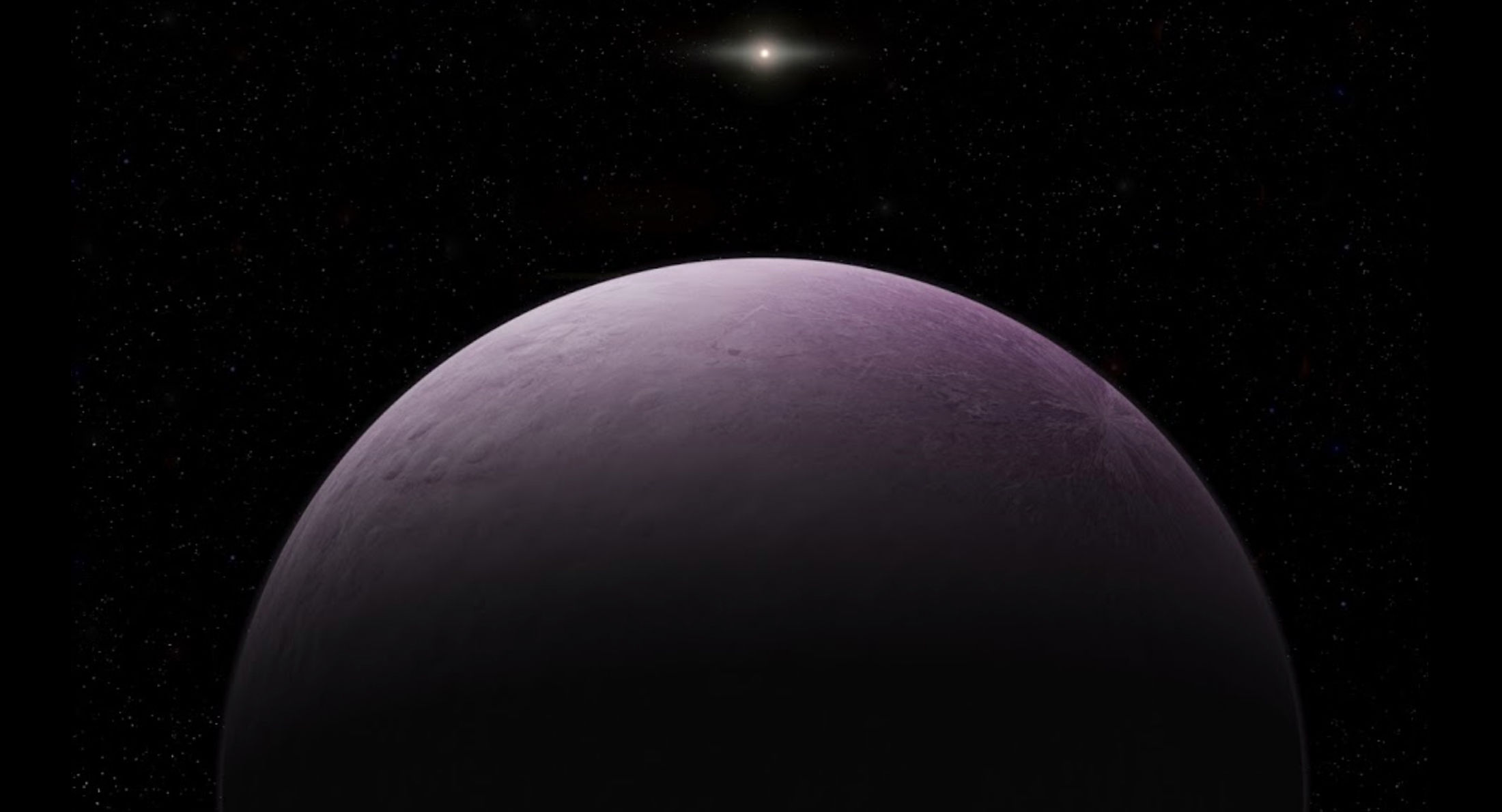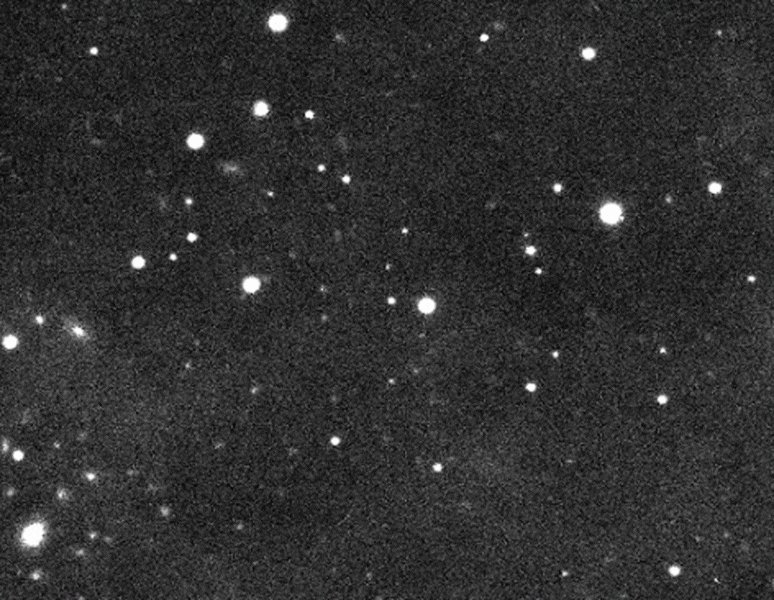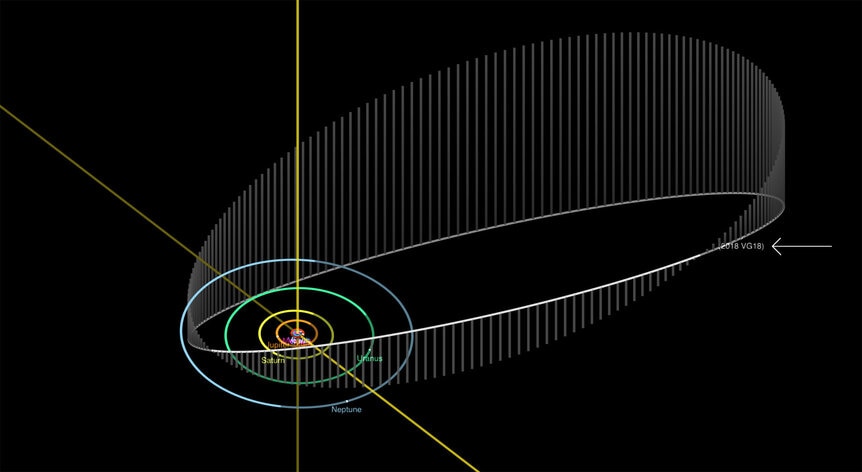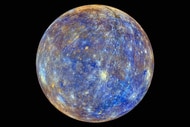Create a free profile to get unlimited access to exclusive videos, sweepstakes, and more!
Meet your very, *very* distant solar system neighbor 2018 VG18

Astronomers searching the skies for distant objects in the solar system have found the most remote one yet. Given the catalog name 2018 VG18, it's currently a staggering 18 billion kilometers from the Sun — nearly four times farther away than Pluto. The orbit isn't well defined yet (more on that in a sec), but it may get as far out as 25 billion kilometers.
That's a long way. What's possibly much more interesting is how close it gets, though. At perihelion (the closest it gets to the Sun) it's only about 3 billion kilometers out, bringing it closer to the Sun than Neptune. That means that over long periods of time it's likely to get close enough to Neptune to be influenced by the big planet's gravity, changing its orbit significantly. So it probably hasn't been in this orbit all that long… on an astronomical timescale. We're talking a few tens of millions of years here, which, to an astronomer, is short. The solar system is well over 4 billion years old, so VG18 must have gotten into this orbit relatively recently.
It was discovered in images taken using the Subaru 8-meter telescope on November 10, 2018, as part of a survey looking for extremely distant objects — including the hypothesized Planet 9, a potential super-Earth orbiting the Sun far, far past Pluto. This same survey recently turned up 2015 TG387 and 2012 VP113, two other icy bodies in the solar system's far reaches.
It's not well known how big VG18 is, but given how bright it is and its distance, it could be 500 kilometers across (about the same size as Saturn's moon Enceladus). That's decently big, enough that its gravity can form it into a sphere.
Other than that, we don't know much about this object. It's so far away and moving so slowly — the orbital period is likely more than 1,000 years! — that it's hard to determine its orbit. The math to figure out the shape and size of an object's orbit has been around for literally centuries, but you need a bunch of observations well spaced out along the orbital path to crunch the numbers, or else the uncertainty is just too large.
An analogy I like is with baseball: Imagine you're in the outfield and the batter gets a hit, but at the moment his bat contacts the ball you have to close your eyes. Now, where will the ball be in, say, six seconds? You can't really know because you couldn't track it long enough to figure out its path. Same with these objects in the solar system; the longer we track them the better we can understand their orbits. VG18 has only been observed a few times over the past month, so we only have a vague understanding of its orbit.
The best fit using the best math is that the orbit is highly elliptical (for techies, it has an eccentricity of 0.77), so while it spends most of its time really far away, for some decades it dips down into the part of the solar system dominated by Neptune.
If this bears out (and it'll be a few months before we know for sure), then this might make the object a Centaur, a class of rocky iceballs that cross (or get near) Neptune's orbit. Not many are known, so being able to add another would be nice.
The reason this is important is that of the structure of the solar system. You have the Sun at the center, then the planets orbiting it. Out past Neptune is what's called the Kuiper Belt: a doughnut-shaped distribution of objects that are rock and ice, and get pretty big (Pluto may be one of the biggest of these). Some of them may have formed out there, but the inner part of the belt may be composed of objects that got flung out there by Neptune's gravity. We call that sort of interaction scattering, so this part is called the scattered disk. VG18 may be part of that.
As my friend Emily Lakdawalla pointed out, VG18 is about as far from the Sun as the Voyager 2 probe, so it may be close to the heliopause, the region of space where the Sun's solar wind slows to a stop, and mixes with the thinly spread material between the stars. That prompted me to wonder if the color of such objects is different, because once past the Sun's protection icy Kuiper Belt objects are peppered by galactic cosmic rays, little subatomic nuclei zipping between stars. This can change the chemistry of the surface of such objects, and the color might be affected.
The fun thing about speculating out loud on Twitter is that other astronomers then jump in. It turns out measuring the color of these objects is hard because they're so faint; VG18 is currently at a magnitude of 24.5, which is ridiculously faint. The faintest star you can see by eye is 25 million times brighter! Even dim Pluto appears 75,000 times brighter than VG18. That's why it's taken so long to discover it.
Still, as astronomer Michele Bannister pointed out, many classes of objects in the outer solar system do seem to have different colors, which is interesting. VG18 has been found to be reddish, like so many other icy objects out there, but exactly how red may have to wait for deeper observations of it. I wonder where VG18 will fall once we do?
Finally, a thought: The astronomers who found it nicknamed VG18 "Farout," obviously due to its distance. I find that funny; yeah, it's really far out there, but in the very near future huge telescopes will be coming online that will find objects like this much more often. The name Farout might sound cool now, but I wonder if in ten years it'll sound downright provincial?
To be honest: I hope so. The more of these far-flung objects we find, the better we'll understand this dark, cold region of our solar system.
















